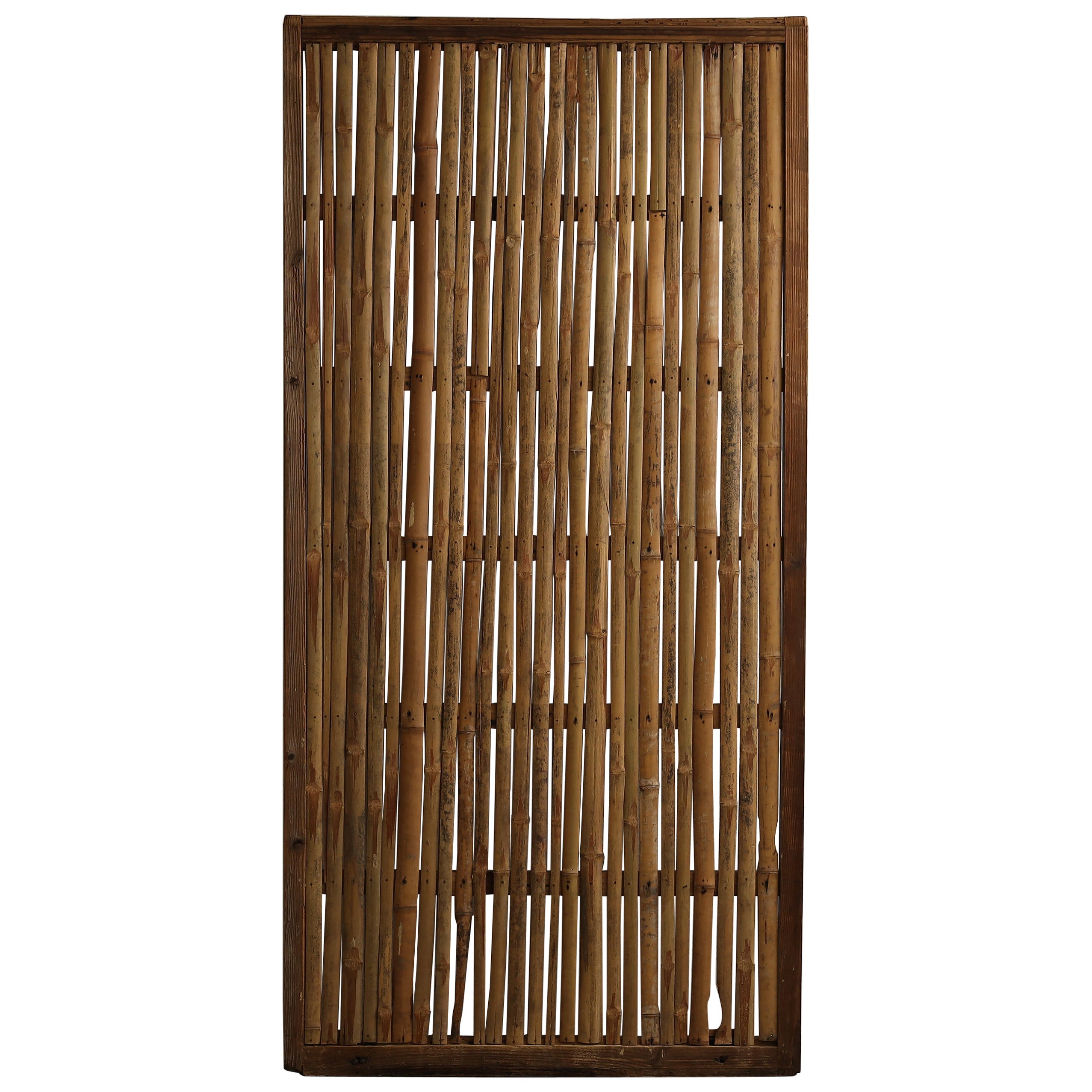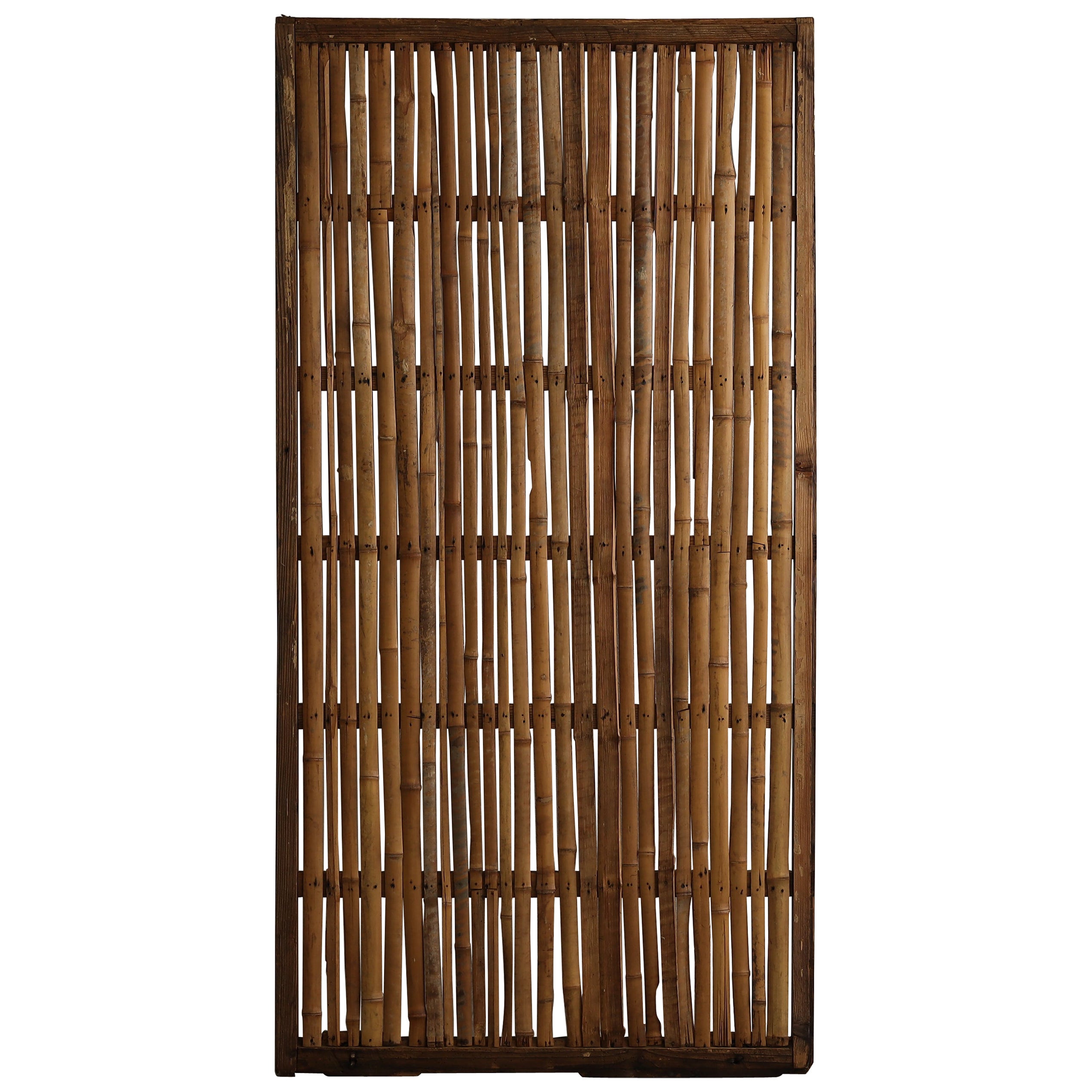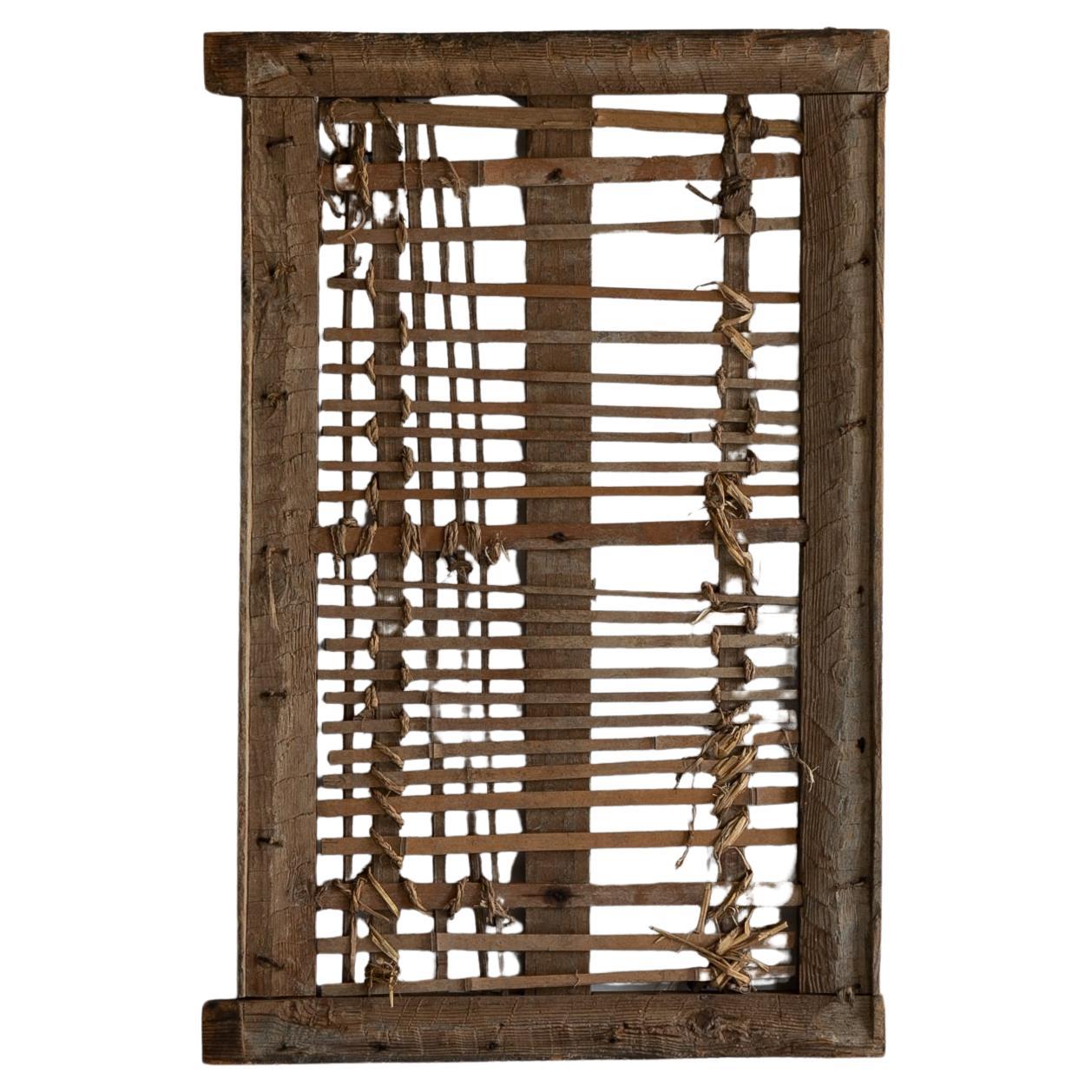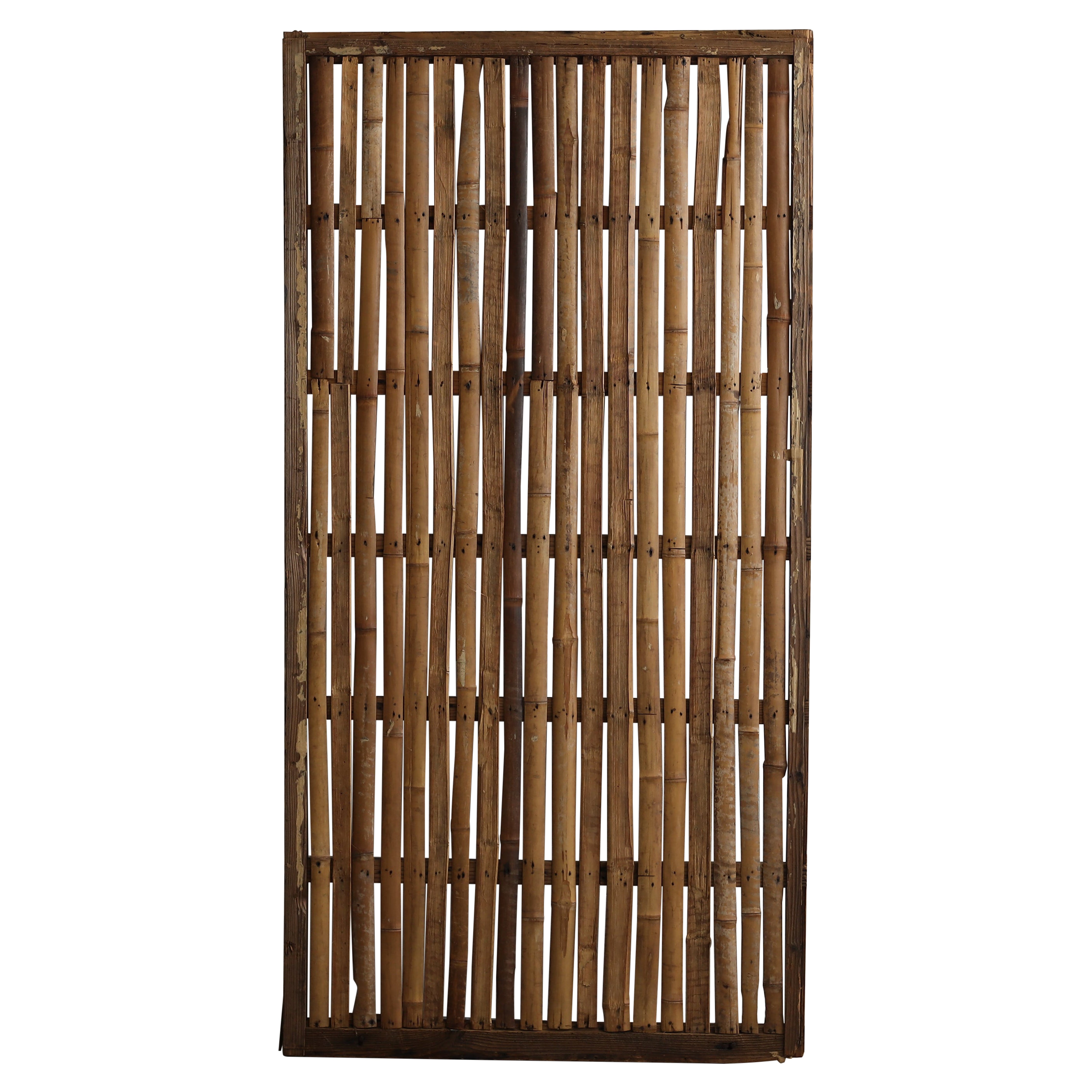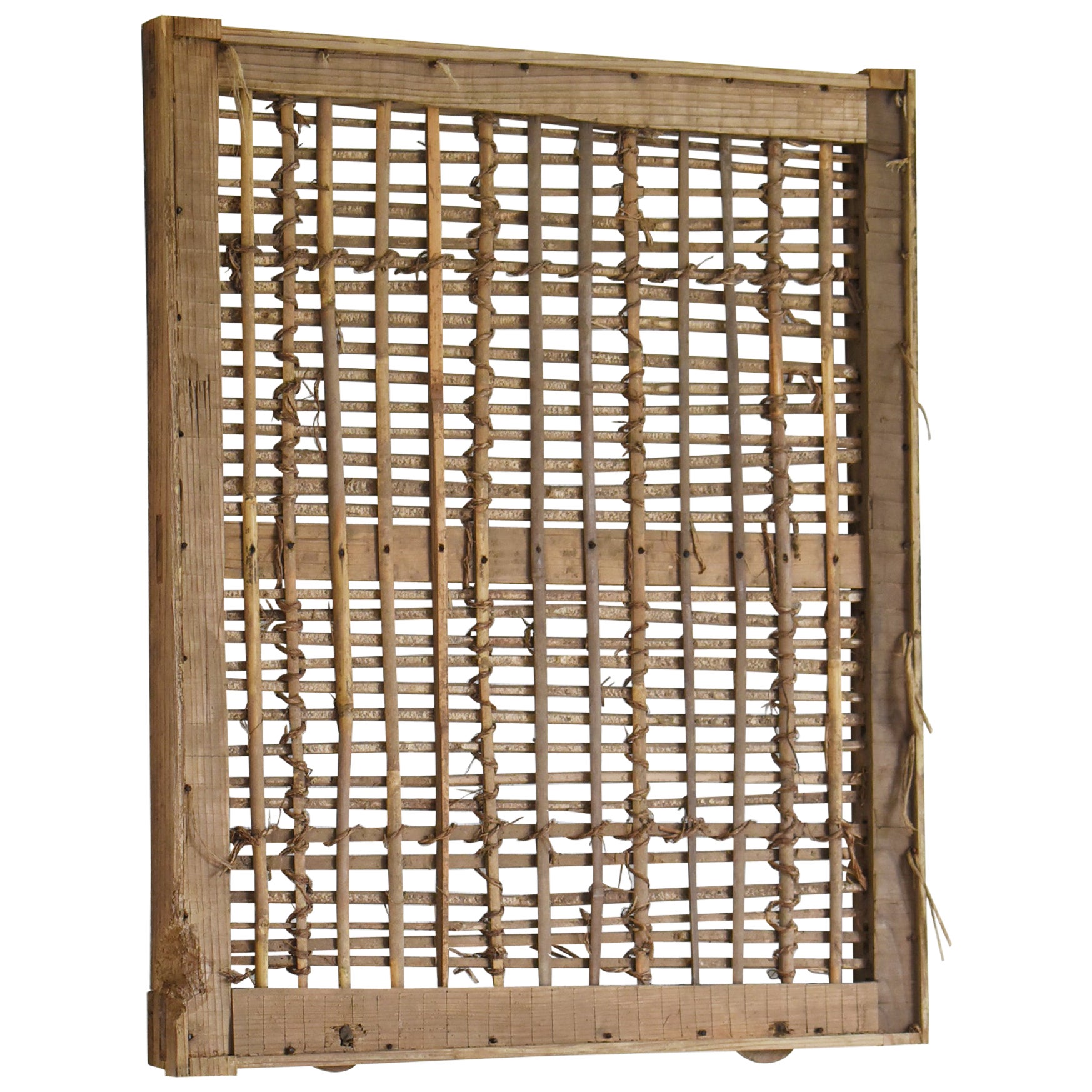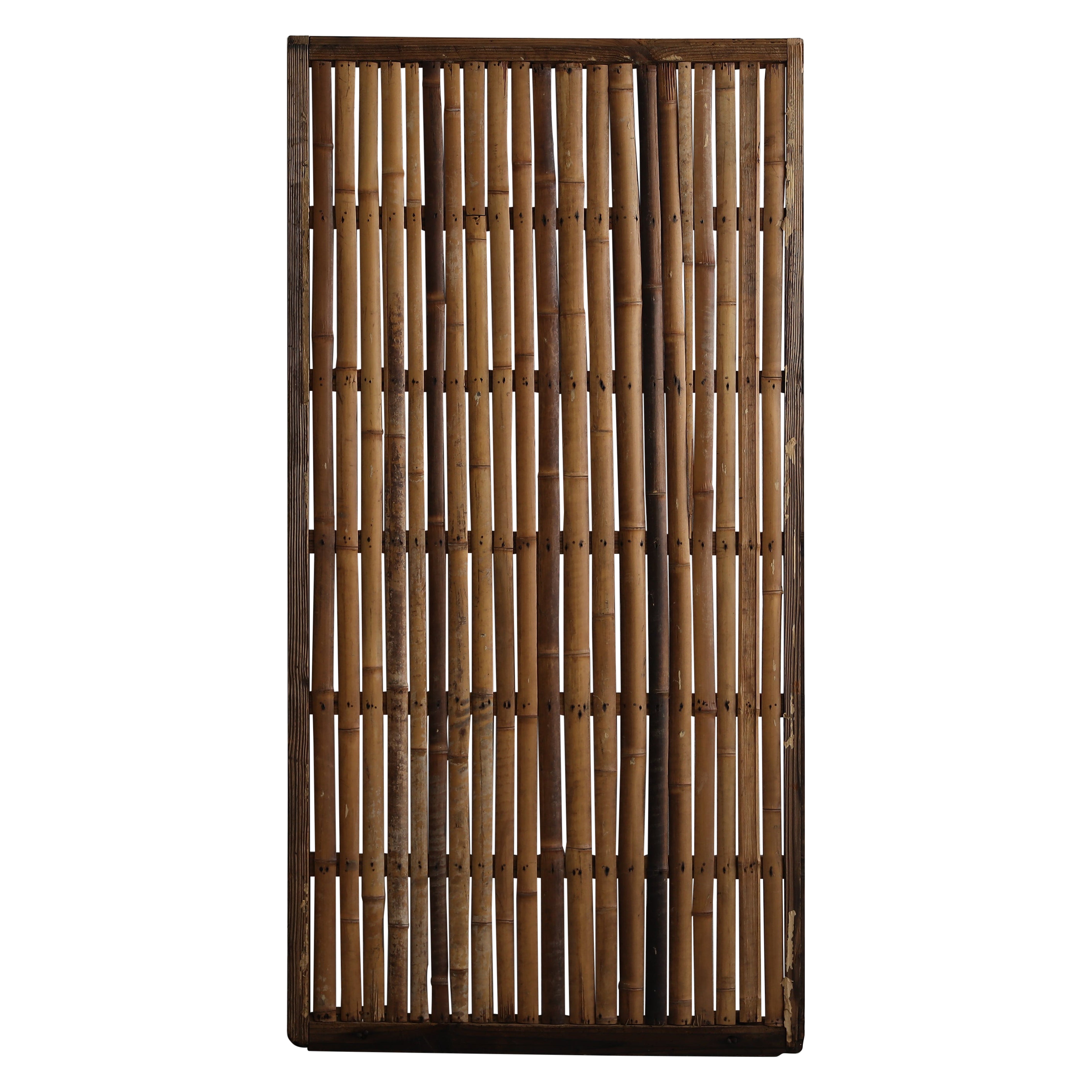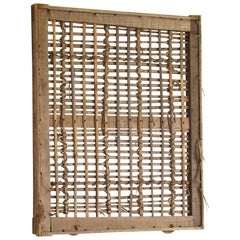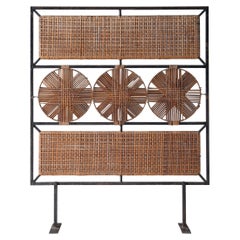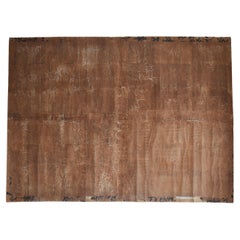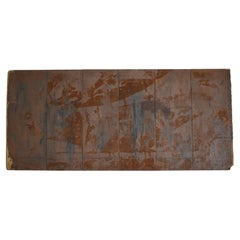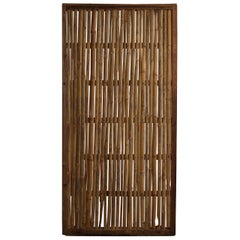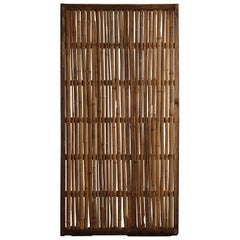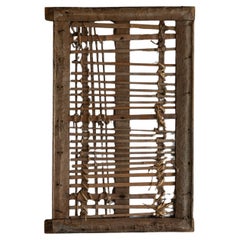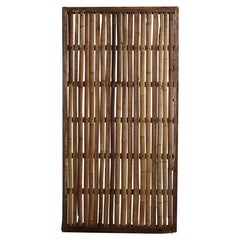Items Similar to Japanese Antique Huge Woven Bamboo Lath Door 1860s-1900s / Abstract Art Wabisabi
Want more images or videos?
Request additional images or videos from the seller
1 of 19
Japanese Antique Huge Woven Bamboo Lath Door 1860s-1900s / Abstract Art Wabisabi
$4,000
£3,071.62
€3,523.63
CA$5,620.47
A$6,294.57
CHF 3,284.40
MX$76,885.48
NOK 41,787.18
SEK 39,389.42
DKK 26,296.40
About the Item
This is an antique large takekomai (woven bamboo lath) door from Japan, crafted during the Meiji period (1860s–1900s). It is made from chestnut wood, bamboo, and straw. Once covered with plaster and clay, it originally functioned as a sliding door. Over time, the outer layers have completely worn away, leaving the underlying bamboo lath exposed. The revealed structure possesses a natural, accidental beauty, evoking the aesthetic of abstract art.
Takekomai is a traditional Japanese construction technique used as a base layer before applying earthen or plaster walls. Thin strips of bamboo are finely split, woven, and firmly tied together with straw rope to improve the adhesion and durability of the plaster. This door encapsulates the wisdom and craftsmanship of past generations. The orderly yet unrefined beauty created by each strip of bamboo, along with the deepened tones developed over decades, gives it an air of dignity that cannot be reproduced in new works.
With its outer covering gone, the underlying construction and the artisan’s handwork are revealed in their raw form. The simple textures of bamboo, straw, and the wooden frame create subtle shadows that change with the light, imparting a quiet and serene presence to any space. The piece embodies the Japanese spirit of wabi-sabi, a philosophy that finds beauty in imperfection and the natural passage of time.
Weighing approximately 20 kg, it is relatively light for its size, making it suitable for wall display. When hung like an art panel, it allows you to appreciate both the traditional Japanese atmosphere and its abstract sculptural beauty.
Weight: 20 kg
_________________________________________
Our Philosophy
Objects always tell the truth.
All I can do is just to face with them sincerely and give
them deep affection as much as I can.
There is no boundary of nationalities and of eras in beauty.
But I think now is the time we choose 'Japanese style' and it
will be the best way to remind us of what we are losing
today and to question us about an essence of beauty again.
I hope that you can touch the memories which the objects here have,
feel and think of something invisible but exists undoubtedly.
- Similar to:Axel Vervoordt (Designer)
- Dimensions:Height: 72.84 in (185 cm)Width: 52.17 in (132.5 cm)Depth: 2.17 in (5.5 cm)
- Style:Meiji (Of the Period)
- Materials and Techniques:
- Place of Origin:
- Period:
- Date of Manufacture:1860s-1900s
- Condition:Wear consistent with age and use.
- Seller Location:Chōsei District Nagara, JP
- Reference Number:1stDibs: LU10403246108012
About the Seller
New to 1stDibs
Joined in the past six months.
5.0
Platinum Seller
Premium sellers with a 4.7+ rating and 24-hour response times
Established in 2017
1stDibs seller since 2025
20 sales on 1stDibs
Typical response time: 2 hours
- ShippingRetrieving quote...Shipping from: Chōsei District Nagara, Japan
- Return Policy
Authenticity Guarantee
In the unlikely event there’s an issue with an item’s authenticity, contact us within 1 year for a full refund. DetailsMoney-Back Guarantee
If your item is not as described, is damaged in transit, or does not arrive, contact us within 7 days for a full refund. Details24-Hour Cancellation
You have a 24-hour grace period in which to reconsider your purchase, with no questions asked.Vetted Professional Sellers
Our world-class sellers must adhere to strict standards for service and quality, maintaining the integrity of our listings.Price-Match Guarantee
If you find that a seller listed the same item for a lower price elsewhere, we’ll match it.Trusted Global Delivery
Our best-in-class carrier network provides specialized shipping options worldwide, including custom delivery.More From This Seller
View AllJapanese Antique Small Door Wall Decoration 1860s-1900s / Abstract Art Wabi Sabi
Located in Chōsei District Nagara, JP
This is an old small window frame made in Japan. It was originally used as a traditional Japanese mud wall fixture. It dates back to the Meiji period (1860s-1900s) and has been in us...
Category
Early 20th Century Japanese Meiji Decorative Art
Materials
Bamboo, Cedar
Japanese Old Bamboo Room Divider 1950s-1970s / Partition Wabisabi
Located in Chōsei District Nagara, JP
This is an old room divider made in Japan.
This furniture was made in the Showa period (1950s-1970s) and has an iron frame with delicate bamboo work.
The combination of linear patte...
Category
Late 20th Century Japanese Modern Screens and Room Dividers
Materials
Iron
Japanese Antique Large Paper Mat "Abstract art" 1860s-1920s / Wabi Sabi
Located in Chōsei District Nagara, JP
This is a very old Japanese matte paper.
It was made during the Meiji period (1860s-1920s) and is very large, measuring approximately 1900 mm x 1420 mm.
The Japanese paper is carefu...
Category
Early 20th Century Japanese Meiji Decorative Art
Materials
Paper
Japanese Antique Large Iron Plate Abstract Art 1900s-1940s / Wabi Sabi
Located in Chōsei District Nagara, JP
This is a door that was an iron plate door made in Japan.
It is an old fixture made in the early Showa period (1900s-1940s), with iron plates carefully stretched over a cedar wood fr...
Category
Mid-20th Century Japanese Showa Decorative Art
Materials
Iron
Japanese Antique Dough Board Wall Art 1879s / Display Stand Wabi Sabi
Located in Chōsei District Nagara, JP
This is an old noodle board made in Japan.
On the back, it is inscribed “明治十二年” in writing, clearly indicating that it was made in 1879s.
Over 140 years have passed, and this piece s...
Category
Antique 1870s Japanese Meiji Decorative Art
Materials
Cedar
Japanese Antique Iron Plate Door 1860s-1900s / Low Table Sofa Table Wabi Sabi
Located in Chōsei District Nagara, JP
This is an iron plate sliding door made in Japan.
It is a rare door made in the Meiji period (1860s-1900s), and the craftsmanship of the time still lives on today.
The structure is m...
Category
Early 20th Century Japanese Meiji Doors and Gates
Materials
Iron
You May Also Like
Japanese Antique Bamboo Sliding Door, Object Mingei Art Panel, Wabisabi Door(2)
Located in Katori-Shi, 12
This is an antique Japanese bamboo door.
It is from the Meiji period (1860s-1900s).
It is made mainly of cedar and bamboo.
It has a simple design that conveys the charm of the mater...
Category
Early 20th Century Japanese Meiji Doors and Gates
Materials
Bamboo, Wood
Japanese Antique Bamboo Sliding Door, Object Mingei Art Panel, Wabisabi Door(1)
Located in Katori-Shi, 12
This is an antique Japanese bamboo door.
It is from the Meiji period (1860s-1900s).
It is made mainly of cedar and bamboo.
It has a simple design that conveys the charm of the mater...
Category
Early 20th Century Japanese Meiji Doors and Gates
Materials
Wood, Bamboo
Japanese Antique Door "Wall Decoration" 1860s-1900s / Abstract Art Wabi Sabi
Located in Sammu-shi, Chiba
This was a very old Japanese warehouse (kura) window sliding door.
It was made during the Meiji period (1860s-1900s).
The frame is made of cedar wood and the lattice is bamboo.
It w...
Category
Early 20th Century Japanese Meiji Decorative Art
Materials
Bamboo, Cedar
Japanese Antique Bamboo Sliding Door, Object Mingei Art Panel, Wabisabi Door(4)
Located in Katori-Shi, 12
This is an antique Japanese bamboo door.
It is from the Meiji period (1860s-1900s).
It is made mainly of cedar and bamboo.
It has a simple design that conveys the charm of the mater...
Category
Early 20th Century Japanese Meiji Doors and Gates
Materials
Bamboo, Wood
Japanese Antique Bamboo Sliding Door, Object Mingei Art Panel, Wabisabi Door(3)
Located in Katori-Shi, 12
This is an antique Japanese bamboo door.
It is from the Meiji period (1860s-1900s).
It is made mainly of cedar and bamboo.
It has a simple design that conveys the charm of the mater...
Category
Early 20th Century Japanese Meiji Doors and Gates
Materials
Bamboo, Wood
Japanese Antique Door, Abstract Art Wabi Sabi, 1860s-1900s
Located in Katori-Shi, 12
Very old Japanese sliding door.
The simple design conveys the charm of the material.
You can feel the world of wabi and sabi.
Recommended as a wall painting.
It was made in the Mei...
Category
Early 20th Century Meiji Doors and Gates
Materials
Wood
